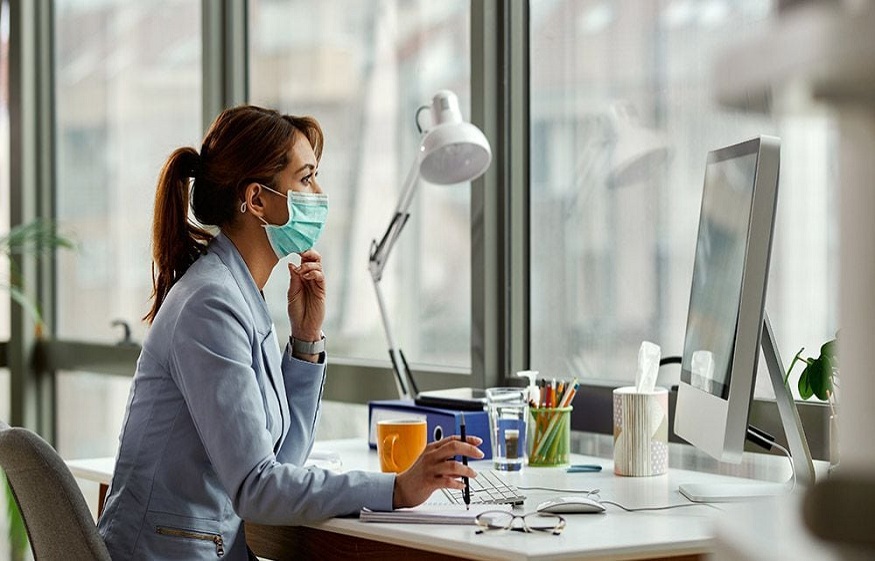Sick Building Syndrome (SBS) is a condition that results when people who work in the same building become ill. The symptoms are wide-ranging and can include anything from headaches, dizziness, and nausea to skin problems and respiratory difficulties. While the cause of SBS is not yet fully understood, it is thought that a variety of factors may contribute, including poor ventilation, chemical pollutants, and high levels of dust or mold. There are several things you can do to help prevent SBS in your workplace:
Keep the Workplace Clean
Sick Building Syndrome (SBS) is a condition that can afflict occupants of buildings where the indoor environment is poor. SBS symptoms include headaches, fatigue, nausea, and difficulty concentrating. While the exact cause of SBS is unknown, it is believed to be linked to factors such as poor ventilation, high levels of carbon dioxide, and exposure to chemicals.
One of the best ways to prevent SBS is to clean the workplace. Dust, pollen, and other airborne contaminants can worsen SBS symptoms, so it’s important to vacuum regularly and dust surfaces with a damp cloth. In addition, it’s important to maintain good indoor air quality by ensuring that ventilation systems are working correctly and adequate air circulation. By taking these simple steps, you can help keep Sick Building Syndrome at bay.
Ensure Pure Air Quality
It’s estimated that up to 30% of new and remodeled buildings worldwide are affected by sick building syndrome (SBS). SBS is a collection of symptoms that occupants experience while in a building. These symptoms include headaches, difficulty concentrating, nausea, and fatigue. While the cause of SBS is unknown, it is thought to be related to poor air quality. Several things can be done to help prevent SBS from occurring or worsening.
Ventilation is one of the most critical factors. Ensure that your home or office has good ventilation so fresh air can circulate. Another way to improve air quality is to use air purifiers and filter systems. These can help to remove excessive levels of dust, mold, and other pollutants from the air. Finally, try to avoid using harsh chemicals or cleaning products. These can release harmful fumes into the air and contribute to SBS symptoms.
Ensuring a clean AC and furnace can also help improve air quality. Dirty filters or damaged equipment cannot work efficiently and lead to indoor air pollution. Hence, you need to hire professional heating and air repair services. These service providers can ensure timely maintenance and repair of your HVAC systems for better air quality. They can also inspect your equipment to detect damages or issues and fix them quickly. By taking these precautions, you can help to keep sick building syndrome at bay.
Invest in Comfortable Furniture
Investing in comfortable furniture will make employees more likely to use their break time to rest and rejuvenate. Providing a variety of break areas with different types of furniture will also allow employees to find a space that suits their individual needs.
For example, some people prefer to take a brief nap on a recliner, while others prefer to relax in a hammock. By creating a comfortable and inviting break area, employers can help to keep sick building syndrome at bay.
Address Any Complaints Immediately
Sick building syndrome (SBS) is a condition that can affect office workers who spend a lot of time in a particular building. Symptoms of SBS include fatigue, headaches, difficulty concentrating, and dizziness. The cause of SBS is not always clear, but it is often linked to poor indoor air quality. Several things can contribute to poor indoor air quality, such as mold growth, dust accumulation, and off-gassing from building materials and office furniture.
There are a few things that you can do to help prevent SBS in your office:
- Ensure that any complaints about the indoor environment are addressed immediately. If there is a problem with the air quality, it must be fixed immediately.
- Take breaks throughout the day to get some fresh air. Go for a walk outside or open a window to let in some fresh air.
- Try to keep your office clean and free of clutter.
A clean office will help reduce the chances of dust buildup and mold growth. These tips will help you create a healthy working environment and reduce the risk of sick building syndrome.
There are a few things that you can do to help prevent sick building syndrome (SBS). First, ensure that any complaints about the indoor environment are addressed immediately. Second, take breaks throughout the day to get some fresh air. Finally, try to keep your office clean and free of clutter. By following these simple tips, you can create a healthy working environment and reduce the risk of SBS.

